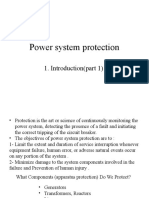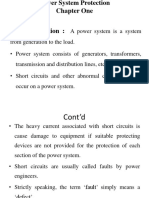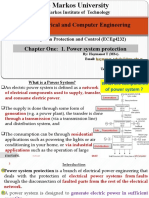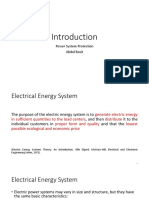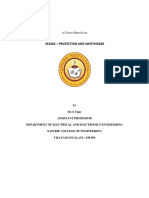0% found this document useful (0 votes)
12 views2 pagesProtection in Power Systems Chapter1 Formatted
Power system protection involves practices and technologies to detect and isolate faults in electrical systems to prevent equipment damage and ensure safety. Key components include relays and circuit breakers that work together to maintain system stability and minimize outages. Effective protection is essential to prevent cascading failures and protect infrastructure investments.
Uploaded by
bongaon132kvbackupCopyright
© © All Rights Reserved
We take content rights seriously. If you suspect this is your content, claim it here.
Available Formats
Download as PDF, TXT or read online on Scribd
0% found this document useful (0 votes)
12 views2 pagesProtection in Power Systems Chapter1 Formatted
Power system protection involves practices and technologies to detect and isolate faults in electrical systems to prevent equipment damage and ensure safety. Key components include relays and circuit breakers that work together to maintain system stability and minimize outages. Effective protection is essential to prevent cascading failures and protect infrastructure investments.
Uploaded by
bongaon132kvbackupCopyright
© © All Rights Reserved
We take content rights seriously. If you suspect this is your content, claim it here.
Available Formats
Download as PDF, TXT or read online on Scribd
/ 2






